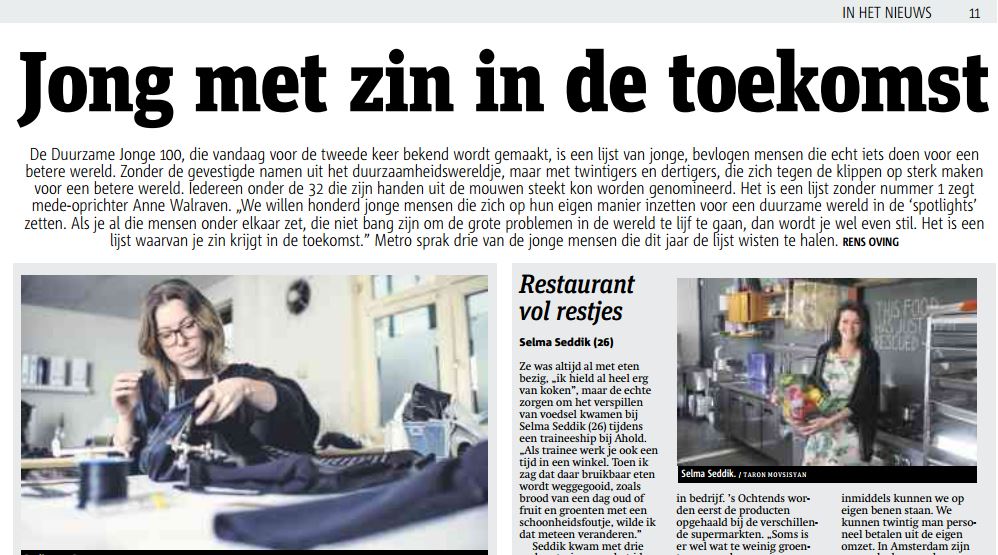About the Sustainable Young 100, and the importance of Supply Chain Management
On November the 14th the Duurzame Jonge 100 (DJ100 or Sustainable Young 100) 2014 (picture 1 below) was published in the Metro-newspaper. This list contained 100 young sustainable heroes, each with their own initiative in creating a better world for the future. Last year I was also on this list and for this year I was asked to participate in the jury, creating the list and judging all the nominees by their sustainability.

Picture 1: Article about the DJ100 in the Metro newspaper
A side-benefit of being DJ100 jury is that you get invited to participate in the important-person informal drink and dinner prior to their big launching event. With (free) beer in my hand I started networking, telling my own story (solar powered doorbells), listening to theirs and discussing about things that should be changed for the future on the field of sustainability.

Picture 2: Jury of the DJ100 2014 at the official event. Where am I?
A recurring word in conversations with different people was “keten” (chain, short for Supply Chain), that large corporate industries should invest, innovate and improve their chain.
For instance, a certain (appealing) lady, active in the fashion industry told me that 1/3rd of the clothes produced are never worn but sent straight to the shredder and burned due to overproduction and overcapacity. The words “chain” and “overcapacity”, rang some bells with me, as Supply Chain Management student.
Fashion and clothing are really trend, hype and marketing-based. From the supply chain perspective clothes should just be available in the store to be bought. If the big brands run out of stock in the stores customers will easily switch to another brand, which equals loss of sales and turnover. That’s why the clothing factories choose to overproduce the clothes with risk of never being sold. Supply Chain Management could reduce overproduction, by aligning the chain, creating more transparency, flexibility and most important, predictability (do I hear someone calling Lean?). This helps preventing this many clothes to end up in the trash and eventually being burned.
There are many more things not right about the clothing industry (although good, improving examples exist), think of the poor working conditions in the factories and dangerous chemicals used. Of course Corporate Social Responsibility is mentioned in every course at some point in time but if you look at the bigger picture (that’s what we SCM-people like to do) it would be brilliant to: save money while preventing overproduction, save the environment because less clothes are turned into CO2, use the reduction in cost price to create better production processes and working environments for the (supplying) factories, and therefore improve the supply chain as a whole. This applies to many more chains in the world and I feel it to be a bit underexposed from the study point of view. Because in the end, when applied, everyone wins, and that’s important.

0 Comments